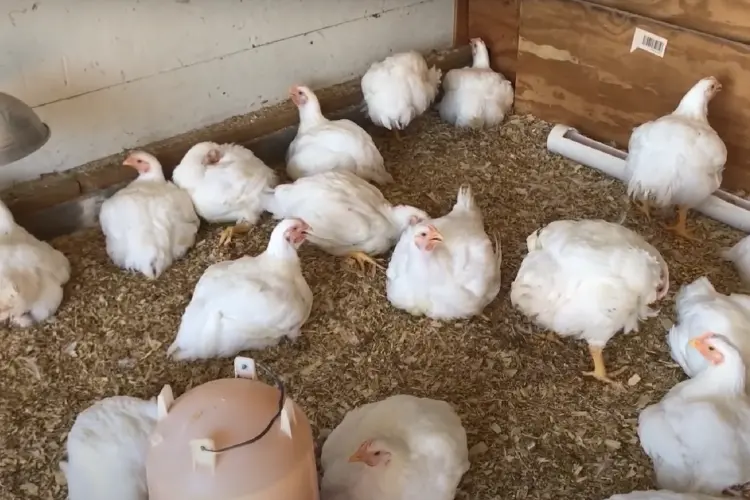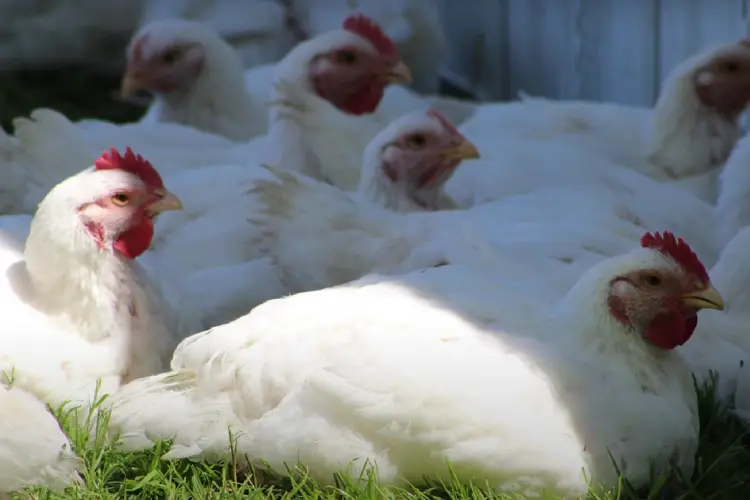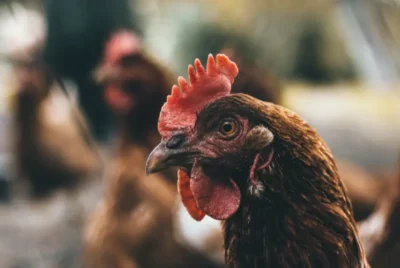Why Cornish Cross Chickens Is Best for Meat Production
Are you looking to raise chickens for meat production? If so, you might wonder why Cornish Cross chickens are best for meat production. With their rapid growth rate, high meat-to-bone ratio, and tender, flavorful meat, it’s no wonder they’re the top choice for meat production.
However, raising these chickens comes with its own set of challenges and ethical considerations. In this blog post, we’ll compare Cornish Cross chickens with other meat chicken breeds, such as Jersey Giants and Red Broilers, and provide tips and best practices for raising them.
Reason Why Cornish Cross Chickens are Popular for Meat Production
When it comes to meat production, Cornish Cross chickens outshine other breeds in many aspects. Their sizeable stature, expansive breast, and accelerated growth rate make them a popular choice among farmers and backyard poultry enthusiasts alike, especially for those interested in raising Cornish Cross hens.
We now turn our attention to the reasons Cornish Cross chickens excel in meat production, with a focus on their impressive growth rate, high meat-to-bone ratio, and the tender, flavorful meat they provide.

Fast Growth Rate
Cornish Cross chickens grow astonishingly, reaching slaughter weight in just 6-7 weeks. Their rapid growth is largely due to their genetics, which have been selectively bred for accelerated growth and feed efficiency.
This makes them a cost-effective option for meat production, as they can be processed and sold quickly, generating a faster return on investment.
High Meat-to-Bone Ratio
Another advantage of raising Cornish Cross chickens is their high meat-to-bone ratio, which means more meat per bird and less waste. This is particularly beneficial for the poultry industry, resulting in increased meat yield and production efficiency.
The Cobb 500 and Ross 308 strains of Cornish Cross chickens are known for their abundant breast meat, often called “Jumbo Cornish Cross”.
This high meat-to-bone ratio makes them an appealing choice for both small-scale farmers and the commercial meat industry.
Tender and Flavorful Meat
The tender and flavorful meat of Cornish Cross chickens is another reason for their popularity in meat production. Their Cornish Cross meat chickens are high in protein and generally preferred by consumers due to its tenderness and mild flavor.
However, some may prefer the taste and texture of other breeds, such as Freedom Rangers or heritage breeds, which are often said to be more robust and flavorful.
Nonetheless, most people find the tender meat of Cornish Cross chickens a delight to the palate, as it results in a succulent and flavorful dish.

The Origins and Development of Cornish Cross Chickens
The Cornish Cross breed was developed through a selective breeding process between White Cornish and White Plymouth Rock chickens. This hybrid breed revolutionized the poultry industry, making meat production more efficient and cost-effective.
Next, we’re going to uncover the origins and evolution of Cornish Cross chickens and examine their influence on the poultry industry.
Selective Breeding Process
The selective breeding process created a hybrid chicken breed with desirable traits for meat production, such as fast growth and high meat yield. Cornish chickens, known for their meat quality and compact body shape, were carefully bred with other breeds to create the Cornish Cross we know today.
One should be aware that this breed was exclusively developed through selective breeding, without involving any genetic modification.
Impact on Poultry Industry
The development of Cornish Cross significantly impacted the poultry industry. Their rapid growth rate, substantial meat yield, and economical nature made meat production more efficient and cost-effective.
As a result, the Cornish Cross became the most efficient traditional livestock species produced, making broiler production more effective and contributing to the emergence of chicken as the most consumed meat in the US.

Raising Cornish Cross Chickens: Tips and Best Practices
Raising Cornish Cross requires proper feeding, housing, and health management to ensure their well-being and optimal growth. Next, we’ll offer advice and best practices for rearing these poultry birds, emphasising their dietary needs, suitable housing, and health management.
Feeding Requirements
Cornish Cross chickens need a high-protein diet to support their rapid growth. It’s recommended to provide them with a starter feed containing 20-22% protein for the initial 3 weeks, then transition to a grower feed comprising 18% protein until butchering time. Controlled feeding is also crucial for preventing health issues, such as leg problems and heart failure.
Housing and Environment
Providing appropriate housing and environmental conditions is essential for raising Cornish Cross chickens. A shelter with a roof to protect them from rain is sufficient, along with a minimum of 2 square feet of space per bird in the run.
It’s also important to maintain a clean and hygienic living area, cleaning their house or shelter at least once a week to prevent spreading diseases.
Health Management
Regular health checks and proper management can help prevent common health issues in Cornish Cross chickens, such as leg problems and heart failure.
I recommend performing weekly health checks to monitor their well-being and detect potential health issues promptly.

Comparing Cornish Cross Chickens to Other Meat Chicken Breeds
While Cornish Cross chickens excel in meat production, they may not be as hardy or adaptable as some alternative breeds, such as Jersey Giants or Red Broilers. We now shift our focus to a comparison of Cornish Cross chickens with other meat chicken breeds in terms of:
- Growth rate
- Meat yield
- Flavor
- Texture
- Resilience
- Adaptability
Growth Rate and Meat Yield
Cornish Cross chickens have a faster growth rate and higher meat yield than other meat chicken breeds, making them more efficient for meat production. While other breeds may take 12-14 weeks to reach slaughter weight, Cornish Cross can achieve this in just 6-7 weeks.
Flavor and Texture
The flavor and texture of Cornish Cross meat are generally preferred over other breeds. With its tender and mild flavor, Cornish Cross chicken is a favorite among consumers. However, some may prefer the richer flavor of other breeds, such as Freedom Rangers or heritage breeds.
Hardiness and Adaptability
Cornish Cross chickens may not be as hardy or adaptable as some alternative breeds, such as Jersey Giants or Red Broilers. While they are renowned for their rapid growth and meat production capabilities, their large size and genetics can make them more susceptible to health issues and less adaptable to various environments.
For farmers seeking hardier, slower-growing birds, alternative meat birds, such as specific chicken breeds, maybe a more suitable option.
Ethical Considerations in Raising Cornish Cross Chickens
Ethical considerations in raising Cornish Cross chickens include addressing health issues and providing suitable living conditions. Their rapid growth rate can lead to health problems, such as leg issues and heart failure, making it essential to manage their diet and monitor their well-being.
We now delve into the ethical aspects involved in rearing Cornish Cross and the significance of safeguarding their welfare.
Health Issues
Cornish Cross are prone to health issues due to their rapid growth, making it essential to manage their diet and monitor their well-being. Proper feeding and health management can help prevent common health issues, such as leg problems and heart failure.
Tackling these health concerns and furnishing appropriate living conditions will safeguard the welfare of your chickens, including those raised as laying hens.
Living Conditions
Ensuring proper living conditions, such as adequate space and access to natural elements like grass and insects, can improve the welfare of Cornish Cross. Providing them with a clean and hygienic living area, along with protection from predators, is essential for their well-being.
By addressing these ethical considerations and providing appropriate living conditions, you can raise Cornish Cross humanely and responsibly.
Breeding Challenges and Alternatives
Breeding Cornish Cross chickens can be challenging, and alternative meat chicken breeds may be more suitable for some farmers.
Next, we’ll examine the challenges in breeding Cornish Cross, and present alternative meat chicken breeds like Jersey Giants, Red Broilers, or Freedom Rangers. These may appeal more to farmers who are looking for more resilient and slower-growing birds for meat production.
Difficulties in Breeding
Cornish Crosses have low fertility rates and difficulty mating naturally, making breeding challenging for small-scale farmers. Their rapid growth and large size can impede their ability to engage in natural mating behaviors, and they may not breed true due to their hybrid nature. This is particularly true for Cornish Cross chicks, the offspring of these hybrid chickens.
Addressing these breeding challenges is essential for farmers looking to raise their own Cornish Cross flock.
Alternative Meat Chicken Breeds
Alternative meat chicken breeds, such as Jersey Giants, Red Broilers, or Freedom Rangers, may be more suitable for farmers seeking hardier, slower-growing birds for meat production.
These breeds offer unique characteristics and advantages, such as adaptability to various environments and more robust flavor, making them ideal for those looking to raise their meat birds.
Considering alternative meat chicken breeds helps farmers make educated choices tailored to their requirements and preferences when raising meat chickens.
Get Your Cornish Cross with Chicken Raising 101
The Cornish Cross stands out as the paramount choice for meat production for several compelling reasons. Their rapid growth rate, impressive feed conversion, and substantial meat yield render them economically viable and efficient for farmers.
Furthermore, the quality of the meat they produce is consistently tender and flavorful, making them a preferred choice for many consumers.
For a deeper dive into the intricacies of chicken raising and to gain invaluable insights, do not hesitate to visit our chicken-raising website. Let us guide you through the art and science of raising high-quality poultry.




